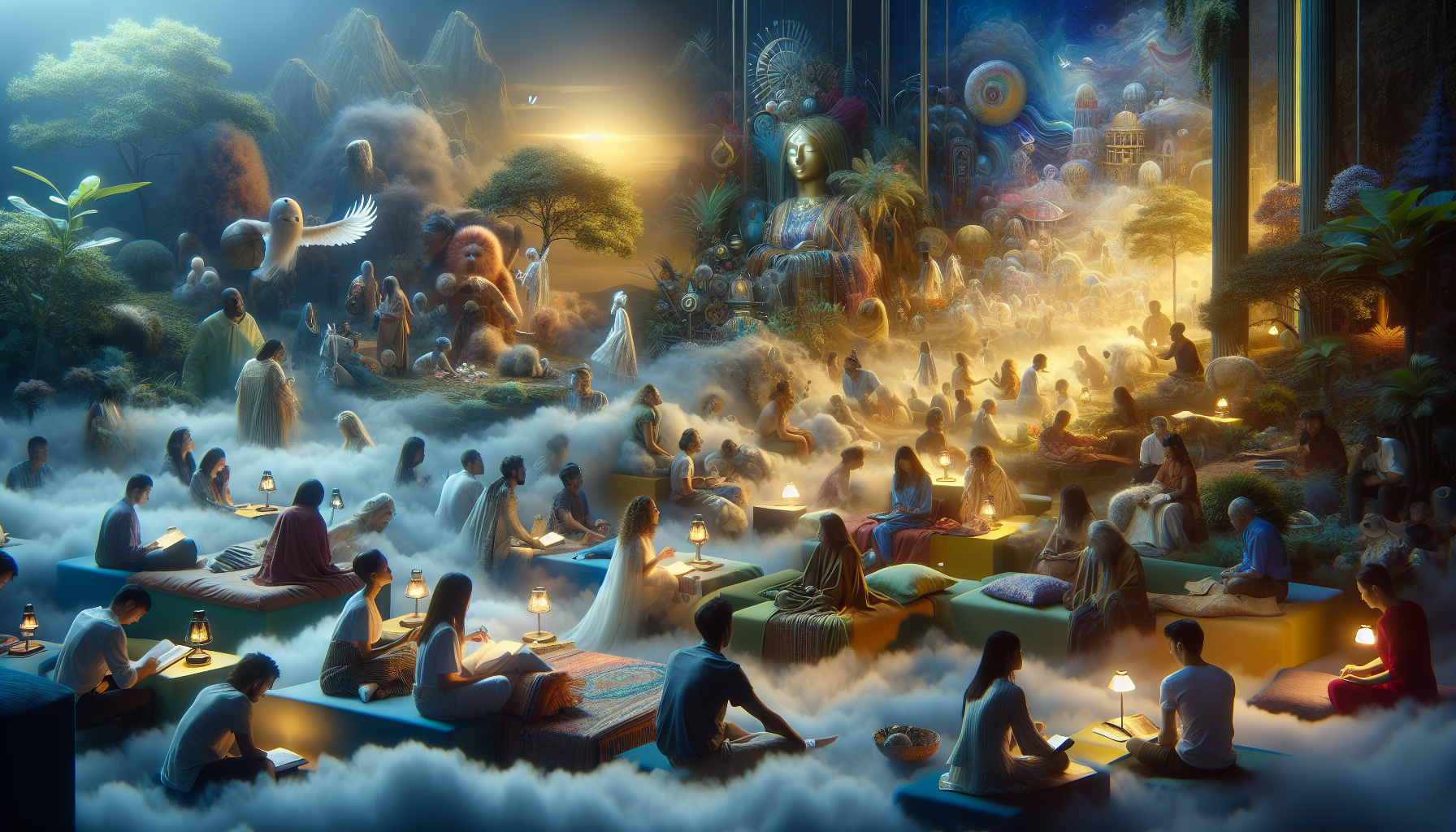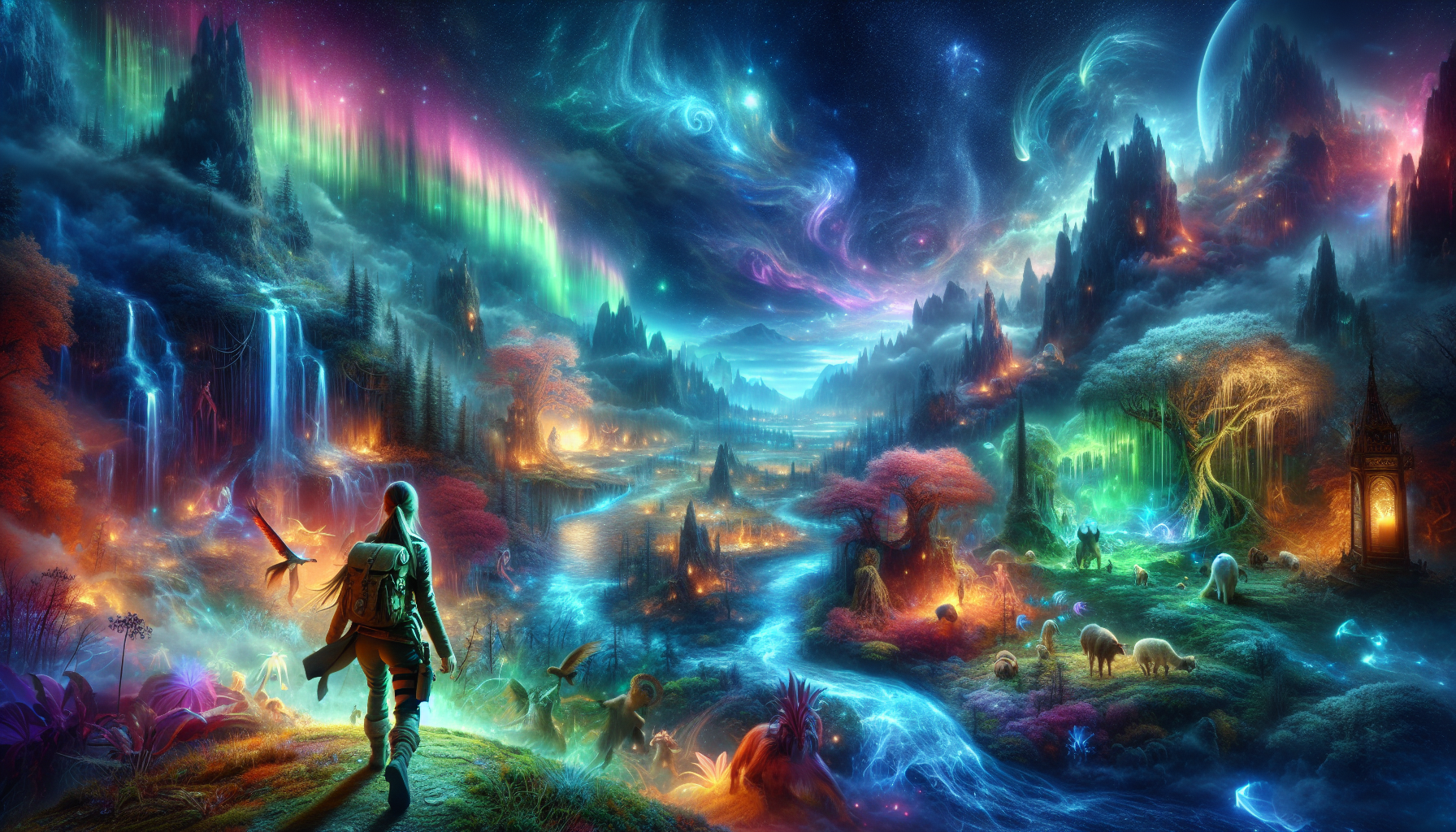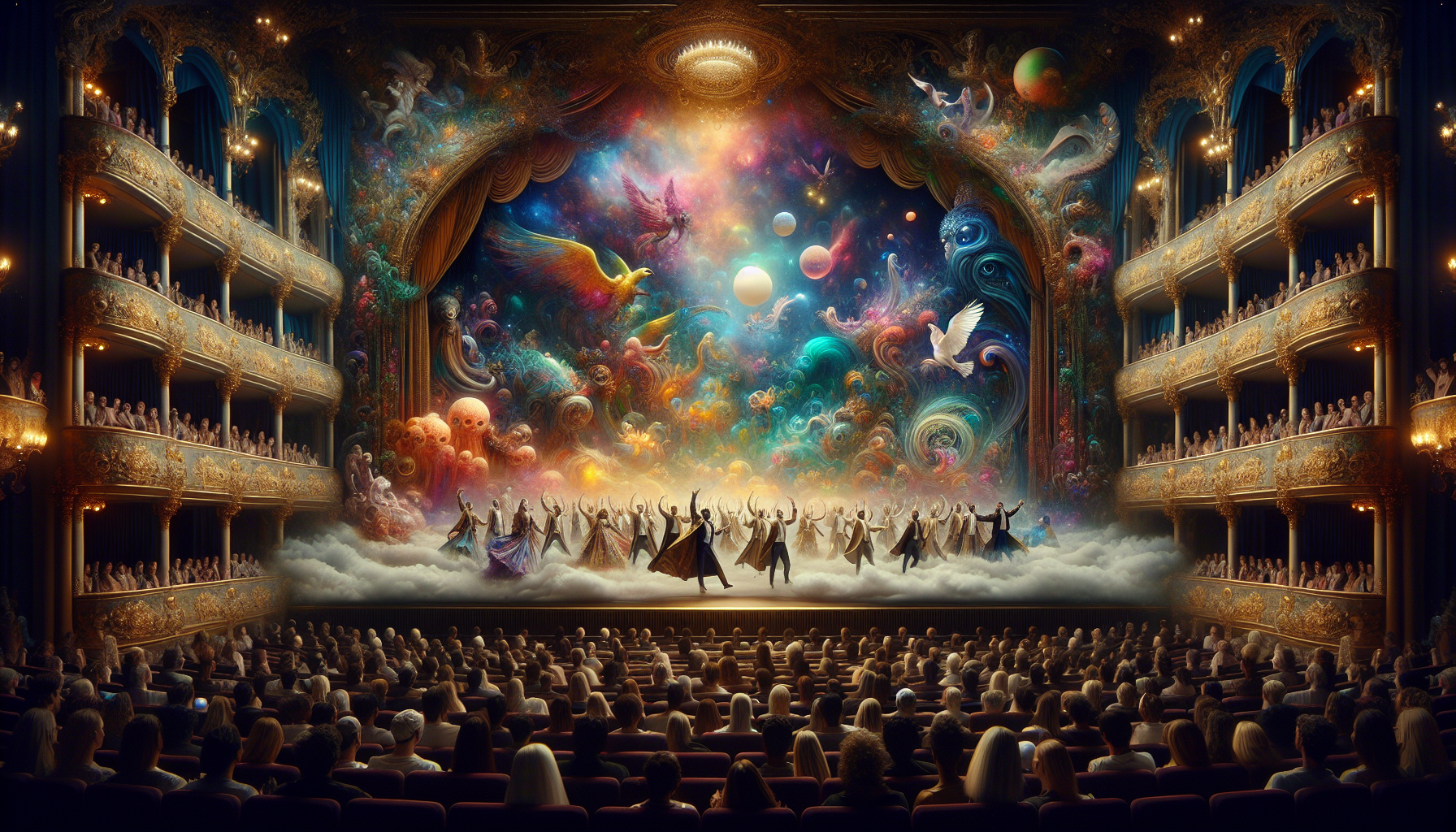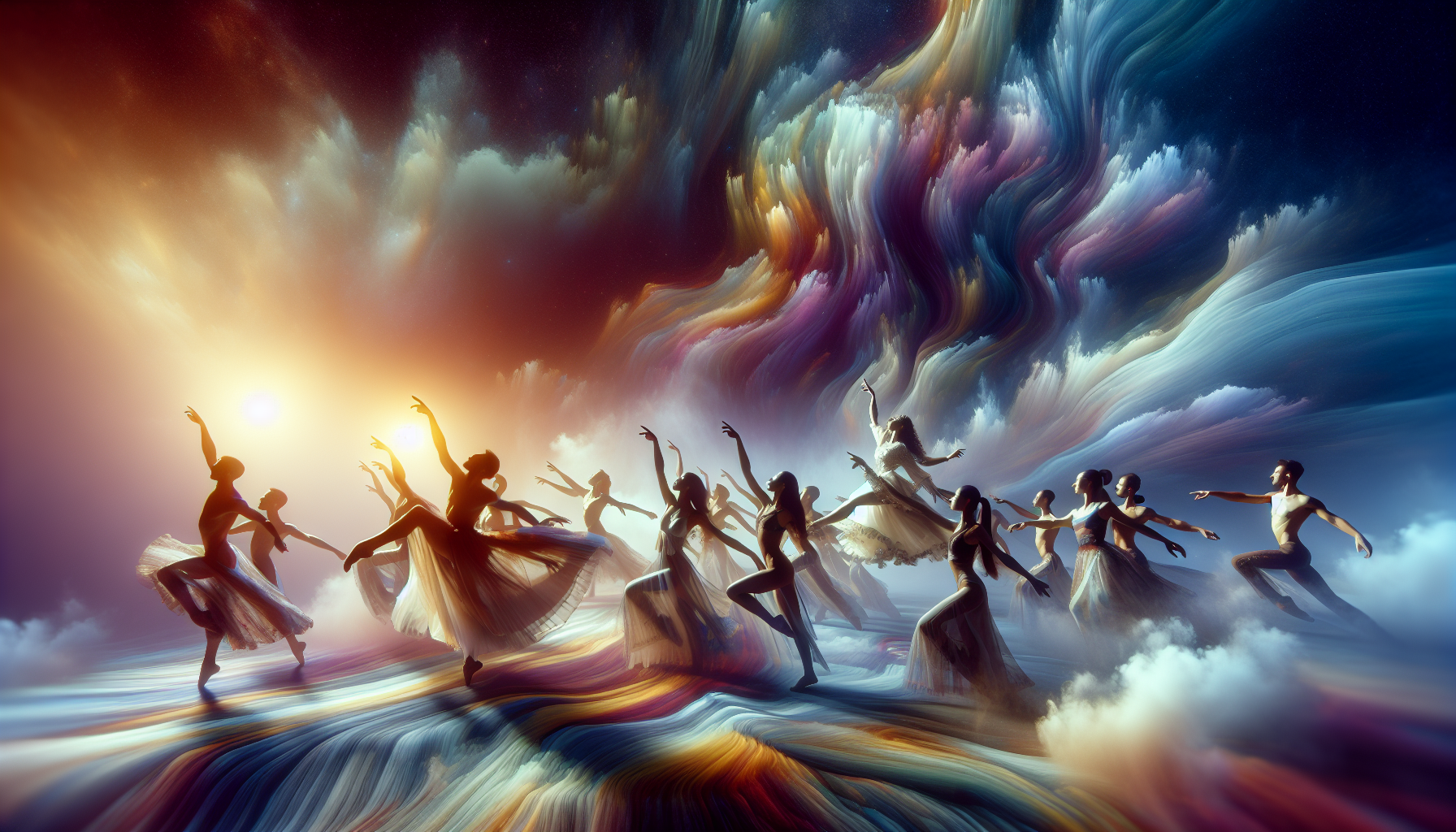Dreams have long been a subject of fascination and mystery, acting as gateways to worlds where the impossible becomes possible, and reality is but a distant echo. These nocturnal narratives not only entertain us but also offer profound insights into our subconscious minds. However, what happens when we start to explore dreams through the lens of culture? 🌍 How do the stories we weave in our sleep reflect the diverse tapestries of human experience across the globe? Welcome to the intriguing realm of “Dreamland Diversity,” where we embark on a journey to explore the cultural variations in dreams and discover what they reveal about our collective psyche.
From the bustling metropolises of New York City to the serene landscapes of rural Japan, dreams capture the imaginations of people worldwide, yet they do so in remarkably different ways. Each culture brings its unique flavor and interpretation to the dream world, influenced by historical narratives, societal norms, and spiritual beliefs. As we delve into this fascinating topic, we’ll uncover how cultural contexts shape not only the content of our dreams but also how they are perceived and valued. We’ll explore the common themes that transcend borders and the unique motifs that remain tethered to specific cultures.
One might wonder, why do certain dreams recur in one culture and not in another? 🤔 For instance, flying dreams are often seen as symbols of freedom and ambition in Western cultures, while in others, they might be interpreted as omens or spiritual experiences. This article will guide you through a tapestry of dream interpretations, from the mystical visions of Indigenous tribes to the pragmatic approaches seen in industrialized societies. By understanding these differences, we gain a deeper appreciation of how dreams can reflect cultural identities and offer a window into the values and anxieties that define us.
As we journey further, we’ll also explore the impact of globalization on our dreamscapes. With the world becoming increasingly interconnected, how do cultural exchanges influence the way we dream? Are we moving towards a homogenization of dreams, or do cultural roots remain strong, preserving the uniqueness of our nocturnal stories? 🌐 Through the eyes of psychologists, anthropologists, and dream researchers, we’ll analyze the intersection of traditional beliefs and modern influences, providing a comprehensive overview of how our dream worlds are evolving in the 21st century.
So, fasten your seatbelts as we embark on an enlightening exploration of dreamland diversity. Whether you’re a curious dreamer, a cultural enthusiast, or someone intrigued by the mysteries of the mind, this article promises to be an eye-opening experience. By the end of our journey, you’ll not only have a richer understanding of the cultural variations in dreams but also a newfound appreciation for the intricate ways in which our dreams connect us all, transcending borders and bridging the gap between different cultures. 🌌
Understanding Dreams Across Cultures
Dreams have fascinated humans for millennia, serving as a mysterious window into our subconscious. While dreams are a universal experience, their interpretation and significance can vary drastically across different cultures. This exploration of cultural variations in dreams highlights how deeply ingrained societal norms and beliefs influence our understanding of this enigmatic phenomenon.
In many Western cultures, dreams are often seen as a reflection of the dreamer’s inner psyche. The Western approach is heavily influenced by Freudian and Jungian theories, which suggest that dreams are a manifestation of repressed desires or a symbolic narrative that reveals deeper truths about the self. This introspective view tends to focus on the individual, treating dreams as personal insights that can aid in psychological development. For example, a recurring dream about falling might be interpreted as anxiety about losing control in one’s waking life.
In contrast, many Eastern cultures, such as those in China and Japan, approach dreams with a more spiritual lens. Dreams are often seen as a bridge to the supernatural, offering glimpses into a world that exists beyond our conscious perception. In these cultures, dreams may be considered prophetic or a form of communication with ancestors or spiritual beings. For instance, in traditional Chinese culture, dreaming of a deceased relative might be viewed as a sign that the ancestor is trying to convey a message or offer guidance. This belief in the spiritual significance of dreams can lead to a rich tapestry of dream symbolism, deeply rooted in cultural myths and legends.
Dreams as Cultural Mirrors
In many Indigenous cultures, dreams are not only personal but communal experiences. The Aboriginal Australians, for instance, believe in the Dreamtime, a sacred era of creation that exists parallel to our current reality. In this worldview, dreams are seen as a way to connect with the Dreamtime and receive wisdom from the ancestral spirits. Dreams in this context are not just personal experiences but are shared with the community, often serving as the basis for storytelling and the transmission of cultural knowledge.
Similarly, the Indigenous peoples of the Americas, such as the Iroquois, regard dreams as vital to maintaining the balance between the natural and spiritual worlds. For them, dreams are not merely reflections of the dreamer’s mind but are messages from the spirits. These messages can have implications not only for the individual but for the entire community. As such, dreams are often shared and interpreted collectively, with the goal of understanding the broader implications for the tribe or clan.
In the context of African cultures, dreams are often tied to notions of health and well-being. Many African societies believe that dreams can reveal insights into an individual’s physical and spiritual health. For example, in some West African cultures, a dream about being chased might indicate a need for spiritual cleansing or protection against negative forces. In these societies, traditional healers or shamans play a crucial role in interpreting dreams and providing guidance or remedies based on the dream’s content.
The Role of Symbolism in Dream Interpretation
Symbolism is a cornerstone of dream interpretation across cultures. Each culture has its own unique set of symbols and meanings, shaped by historical, religious, and societal influences. Understanding these symbols is key to deciphering the messages conveyed through dreams.
In Western cultures, dream symbolism is often influenced by psychoanalytic theories. Common symbols, such as flying or teeth falling out, are thought to represent universal psychological states. Flying might symbolize freedom or ambition, while losing teeth might indicate anxiety about one’s appearance or a fear of losing control. These interpretations, however, can vary greatly depending on the individual’s personal experiences and cultural background.
In contrast, dream symbolism in many Eastern cultures is deeply rooted in religious and philosophical beliefs. In Hindu culture, for example, dreaming of a snake might be seen as a representation of Kundalini, a form of primal energy believed to be coiled at the base of the spine. Similarly, in Buddhist cultures, dreaming of water might symbolize purification and the flow of life. These interpretations are often tied to the dreamer’s spiritual journey and the quest for enlightenment.
Cross-Cultural Comparisons of Dream Symbolism
Let’s explore some common dream symbols and how they are interpreted in different cultural contexts:
| Symbol | Western Interpretation | Eastern Interpretation |
|---|---|---|
| Snake | Fear, betrayal, transformation | Kundalini energy, spiritual awakening |
| Water | Emotions, the unconscious mind | Purification, life flow |
| Flying | Freedom, ambition | Transcendence, spiritual progress |
As you can see, the same symbol can have vastly different meanings depending on the cultural context. This underscores the importance of understanding the cultural framework within which dreams are interpreted.
For a deeper understanding of how dream symbols are interpreted across cultures, consider watching the video below, which delves into this topic with captivating examples and expert insights.
Understanding Dream Symbolism Across Cultures – Dream Research Channel
The Influence of Religion on Dream Perception
Religion plays a pivotal role in shaping the way dreams are perceived and interpreted. Many religious traditions view dreams as divine messages or as a means of spiritual communication.
In Christianity, dreams have historically been seen as a means through which God communicates with individuals. The Bible is replete with instances where dreams serve as divine revelations, guiding prophets and believers alike. For example, Joseph’s dreams in the Old Testament foreshadowed his rise to power in Egypt. In contemporary Christian thought, while the emphasis on dreams as divine messages has waned, they are still considered significant for personal spiritual reflection.
In Islam, dreams hold an esteemed place, with the Prophet Muhammad reportedly stating that dreams are one of the 46 parts of prophecy. Islamic tradition categorizes dreams into three types: those from God, those from the self, and those from the devil. Dreams from God are believed to be truthful and carry significant spiritual messages. This belief has led to the practice of seeking guidance from dreams in personal and communal decision-making.
Religious Rituals and Dream Practices
Many cultures incorporate specific rituals and practices related to dreams as part of their religious observances. In Hinduism, dreams are sometimes used as a form of meditation or spiritual practice. Devotees might use dream journaling or guided dream meditation to explore deeper spiritual insights.
In Native American traditions, particularly among the Plains tribes, vision quests are a well-known practice where individuals seek out dreams or visions as a form of spiritual guidance. These quests involve fasting and solitude, allowing the individual to connect with spiritual forces and receive visions that are interpreted as guidance for their life path.
The role of religion in dream interpretation highlights the profound connection between spiritual beliefs and the understanding of dreams. These cultural and religious frameworks provide a lens through which dreams are not only experienced but also interpreted and acted upon.
- Explore the diverse perspectives on dreams in different religious traditions.
- Consider how your own cultural background influences your dream interpretation.
- Engage with dream symbolism by maintaining a dream journal and reflecting on recurring themes.
By delving into the cultural variations in dream interpretation, we gain a richer understanding of the human experience and the myriad ways in which dreams serve as a bridge between our inner and outer worlds. Through this exploration, we uncover the deep connections between culture, spirituality, and the subconscious mind. 😊

Conclusion
In conclusion, the exploration of cultural variations in dreams, as presented in “Dreamland Diversity,” offers a profound insight into the multifaceted nature of human experiences and consciousness. Throughout the article, we’ve delved into how dreams serve as a reflection of the cultural, social, and personal contexts from which they arise. By examining diverse cultural perspectives, it becomes evident that dreams are not just a universal phenomenon, but are deeply influenced by cultural norms, values, and experiences.
One of the key points discussed is the way different cultures interpret and value dreams. In many indigenous cultures, dreams are considered significant spiritual experiences, often seen as messages from ancestors or the spiritual realm. These cultures often place a high value on dreams, incorporating them into daily decision-making processes and community rituals. In contrast, Western cultures tend to view dreams more through the lens of psychology, often considering them as expressions of the subconscious mind or manifestations of daily stress and concerns.
Another important aspect covered is the role of dreams in cultural identity and storytelling. Dreams have historically served as rich sources of narrative and myth, influencing literature, art, and folklore. For example, in Aboriginal Australian culture, the concept of “Dreamtime” is integral to their mythology and understanding of the world, illustrating the connection between dreaming and cultural identity.
Furthermore, the article highlights how globalization and cultural exchange have led to a blending of dream interpretations. With increased interaction between different cultures, there is a greater sharing of dream-related beliefs and practices, leading to a more integrated understanding of dreaming across cultures. This intercultural dialogue enriches our understanding of the human experience and highlights the universality of dreaming while respecting its cultural specificity.
The research and perspectives shared in this article underscore the importance of recognizing and respecting cultural differences in dream interpretations. By doing so, we can foster a greater appreciation for the diversity of human experiences and promote empathy and understanding across cultural boundaries.
As we conclude this exploration of cultural variations in dreams, it is important to reflect on the broader implications of these findings. Dreams offer a unique window into the human psyche, providing insights that transcend cultural boundaries and touch upon universal human themes such as love, fear, hope, and desire. Understanding these variations not only enriches our appreciation of cultural diversity but also deepens our understanding of ourselves.
We encourage you, dear reader, to continue this journey of exploration. Reflect on your own dreams and consider how your cultural background might shape them. Engage in conversations with individuals from different cultural backgrounds to gain further insights into their dream experiences. Share your thoughts and experiences in the comments section, and consider sharing this article with others who might find it intriguing. 🌍✨
By doing so, you contribute to a broader dialogue about the significance of dreams and their role in human culture and psychology. Let’s celebrate the diversity of dreams and the richness they bring to our shared human experience.
For further reading and exploration, consider visiting resources such as the International Association for the Study of Dreams (https://www.asdreams.org) and the Sleep Foundation (https://www.sleepfoundation.org). These platforms offer valuable insights and research on the fascinating world of dreams.
In embracing the diversity of dreams, we acknowledge the tapestry of human experience and the shared mysteries that bind us together across cultures. Let’s continue to explore, learn, and grow together in understanding the profound impact of dreams on our lives. 🌟
[Note: Please ensure the URLs provided are still active and contain the relevant content before using them in your article.]
Gabriel is a visual storyteller and dream archivist whose work explores the fragile boundary between memory and imagination. Through layered visuals and symbolic design, Gabriel captures the fleeting essence of dreams — those strange, beautiful, and sometimes haunting fragments that drift through sleep and linger in waking thought.
His creative journey is rooted in a deep fascination with the subconscious and the imagery it conjures. From half-remembered landscapes to recurring symbols and surreal encounters, each piece Gabriel brings to life becomes a portal into the inner archive — where time distorts, meanings shift, and personal mythology takes form.
With a background in handcrafted artistry and visual composition, Gabriel merges intuition with intention. His work doesn’t merely depict dreams; it preserves them, translating ephemeral moments into tangible expressions that evoke emotion, curiosity, and quiet revelation. Each visual is both a record and an invitation to explore the rich terrain of inner life.
Through illustrated dream journals, symbolic studies, and visual essays, Gabriel invites others to connect with the poetic architecture of their subconscious landscapes. His art becomes a mirror — not only of what we see at night, but of what we carry deep within.
His work is a tribute to:
-
The fragile beauty of forgotten dreams
-
The language of symbols in the subconscious mind
-
The inner worlds we visit but rarely name
Whether you’re a lucid dreamer, a seeker of hidden meanings, or someone fascinated by the mystery of sleep-born stories, Gabriel welcomes you to step into a space where dreams are not lost — they are archived, one vision, one sketch, one silent narrative at a time.





